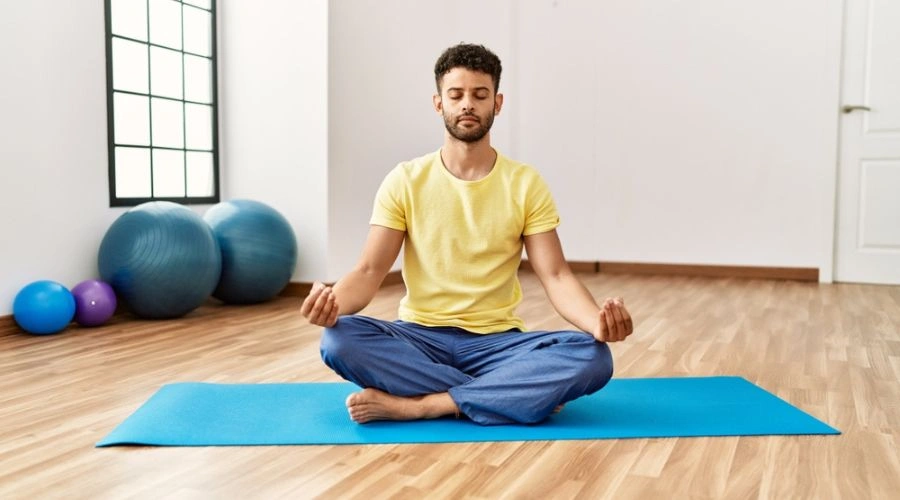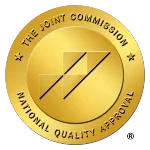How to Manage Your Shaking and Other Anxiety Symptoms
Does it seem like your anxiety rules your life, or that its hard to remember a time when you did not feel anxious to some degree? If so, you are not alone.
Many people experience physical symptoms of this mental health condition, such as an increased heart rate and anxiety tremors. If this describes you, then you need to know how to stop shaking from anxiety with a few simple strategies you can use on your own at home.
As a brief overview; anxiety-induced shaking can be reduced with progressive muscle relaxation, body scans, and deep breathing exercises. Your nervous system may also respond well to yoga, gentle stretching, and light exercise. Guided meditation and grounding techniques are helpful, as are medication and therapy. We will review all these approaches and more in the sections to come.
And if anxiety is impacting daily life for you (or someone you care about) remember that Catalina Behavioral Health can help you find the solution to anxiety tremors.
Our JCAHO-accredited facility offers a variety of treatments and levels of care so that you get the assistance you need to manage anxiety.
Keep reading to learn more about what you can do right now to minimize anxiety symptoms.
Get Confidential Trauma and Anxiety Assessment
Tips and Strategies to Reduce Anxiety-Induced Shaking
Without preventative steps, managing anxiety can seem like a full time job. Your anxiety symptoms can be relentless and lead to some embarrassing physical symptoms like anxiety tremors. Fortunately, there are some exercises you can do to try to minimize the effects of this symptom on your own at home.
We’ll also cover some strategies that are best implemented with a therapist and/or a treatment team at your disposal. If your level of anxiety justifies it, formal support from Catalina can help you find the right solutions, with support that will minimize your symptoms in an inpatient or outpatient setting.
Here are some of our best strategies for anxiety-induced shaking as a result of your generalized anxiety disorder.
Progressive Muscle Relaxation Techniques
If you have a regular meditation or yoga practice, you may already be familiar with this concept. Progressive muscle relaxation forces you to focus on each body part, one at a time. You can start by lying down or sitting comfortably, such as on a couch, where you can fully relax.
if you face workplace anxiety, this will be harder to do in an office chair but not impossible. Give yourself time and practice the exercise with the accompaniment of relaxing audio if possible.
Once you are settled in, start at your feet and focus on fully relaxing them. Then move on up to your ankles, hamstrings, and quads through each muscle group. Stopping at each body part, you should focus your attention there and allow it to sink heavily into the ground.
As you go, you’ll start to feel more relaxed, bit by bit. Once you reach the top of your head, pause a moment and enjoy the feeling of having your full body relaxed. As stressors recur, notice the tension accumulate and release as it happens, on the fly. As time goes and you become more practiced, this helpful exercise can begin to seem like second nature.
Deep Breathing Exercises for Immediate Relief

While the exercise above, progressive muscle relaxation, may take a few minutes, there is the potential for more immediate relief from deep breathing exercises. There are lots of different breathing exercises you can try out, giving you the flexibility to find what truly works for your anxiety shakes.
First, you can focus on making your exhales longer than your inhales. Inhale for a slow count of four and then exhale to a count of eight at the same rate. Move all the air out of your lungs, which can trigger a parasympathetic nervous system response, instantly calming you. Try this for five minutes.
Square breathing is another exercise that can help with anxiety disorders. Inhale for a count of four, hold for four, exhale for four, and hold for four again. You can experiment to find the right count that allows you to find relaxation with your deep breathing. This alone can be a game-changing way of releasing tension and easing your body out of the shaking that can accompany high anxiety.
Guided Meditation for Anxiety Tremors
We know that, often, if you are someone who is struggling with feeling anxious, you may not be able to focus long enough for a deep breathing exercise. It might seem impossible and you are not able to walk yourself through the progressive relaxation techniques. Instead, you could try a guided meditation.
Guided meditation will help you to anchor yourself in the present moment. Find a spot where you can sit or lie down comfortably, ideally somewhere cool and mostly dark. If you are at work and need to practice from your office chair, you can try this, too.
There are lots of recordings for guided meditations on YouTube and Spotify. Find one that speaks to you and allow yourself to sink into the words. Close your eyes and focus on it as much as possible. As you start to think about the light filling you or sitting in your happy place, the shakes may lessen in severity and even stop altogether.
Body Scan to Pinpoint Tension
Progressive muscle relaxation techniques are helpful, but what if you find it nearly impossible to actually relax your muscles? Instead, you might start with a simple body scan to see where you’re holding on to that tension in the body. Start at the top of the head and work your way down, noting which muscle groups are ready to spring into action.
When you encounter a part of the body that’s holding this tension, make a conscious effort to breathe into it. Picture it filled with small bubbles of light that you release into the room with each breath.
Move from one body part to the next without judgment. If you can’t relax that part of the body, move to the next one. There should be no judgment of yourself in this exercise, so be patient and give yourself time to find success. Again, background audio you find relaxing can help.
Grounding Techniques for Anxiety Shakes

In times of more acute anxiety or even in the instance of a full-blown panic attack, you might need to focus not on muscle tension or breathing exercises. Instead, you may need to anchor yourself in the present moment. Grounding techniques can help with panic attacks and anxiety-induced shaking for improved mental health.
The first exercise you may try is the 5-4-3-2-1 exercise. Name five things you can see, four things you can feel, three things you can hear, two things you can smell, and one thing you can taste. You can stop focusing on what worries you by engaging all of your senses in this exercise.
Another exercise you might try is to focus on a sensation. Pick an object that is sitting nearby, like a paperweight from your desk. Experience how it feels in your hand: its weight, temperature, texture, and anything else that strikes you as important. Spend three or four minutes experiencing the object and redirecting your thoughts back to it when they wander.
Diaphragmatic Breathing
If you found that deep breathing helped your anxiety shakes, you will want to consider trying a very specific type of diaphragmatic breathing to help with other symptoms. Lay down on the floor or sit in a comfortable position where you can breathe freely. Place one hand on your heart and one on your belly.
Breathe as deeply as possible, feeling the hand on your belly rise with the inhalation. Hold the breath for a few seconds, and then release it. You should feel both your belly and chest contract.
Repeat this process for five to ten minutes, taking your time to really feel each breath in the body. As with neurogenic tremors, feeling and releasing the anxiety in this exercise can be a huge help.
Get Accredited Treatment Programs at Catalina
A Quick Yoga Practice
Yoga is another great strategy to reduce anxiety symptoms, whether you have social anxiety disorder or generalized anxiety disorder. It can combat stress hormones, help you to move your body, and get out of your head just for a little bit. You can leave anxious feelings on your yoga mat.
You can approach a yoga practice in several ways, so you may have to experiment to see what works best for you. Some people with intense anxiety require a more rigorous practice that helps them to work up a sweat while focusing on mindful breathing. Ashtanga and Vinyasa yoga are great options for this.
On the other hand, you might just need some gentle stretches to help with anxiety shivers. Yin yoga, or even a practice that just focuses on a full-body stretch could be a great option. This is ideal for anyone who wants to go to bed right after their practice instead of being awake with panic disorder.
Mindfulness Meditation and Brain Function

If you have experimented with guided meditation, you might be ready to try a quiet meditation on your own. Mindfulness meditation, often considered a part of dialectical behavior therapy, can help you stay present in your body and stop anxiety tremors. All you have to do is sit quietly and notice how you feel.
As thoughts come up, imagine them drifting down a river. You could also picture yourself as a tree. Each thought that you have is like a leaf, falling down and away until you can no longer see it anymore. Every time your mind wanders, bring it back to the present moment.
This is a very popular technique for treating anxiety and other mental health conditions, such as mood disorders like depression. It can calm a fight-or-flight response in just a few minutes.
Long-Term Strategies and Lifestyle Changes for Better Health Conditions
Anxiety tremors can be greatly impacted by taking a long-term view of your disorder and implementing a few basic strategies.
The first is to ensure that you’re getting adequate sleep each night. Most people do best aiming for seven to eight hours each night. That might mean going to bed earlier and minimizing screen time around bedtime to make that happen. Lack of sleep can exacerbate anxiety.
Another important lifestyle change is to cut back on caffeine. While many people rely on coffee to get them through day-to-day life, the physical symptoms of anxiety can mirror the effects of caffeine. It’s best to cut it out or strictly limit your intake while undergoing mental health treatment.
Both of these are simple changes, but they might not be easy. Just think about whether you really want to worsen anxiety or whether you would prefer to sleep and rest more with less dependency on coffee.
Cognitive Behavioral Therapy (CBT) to Reframe Thoughts
One important treatment that can help with managing anxiety is cognitive behavioral therapy (CBT). This treatment modality focuses on the intersection between thoughts, feelings, and actions. If you interrupt this cycle at the thoughts stage, you might be able to impact your actions.
In this case, that could mean interrupting stress hormones and minimizing anxiety shakes.
This is also a great time to look at cognitive distortions that might feed into your anxiety symptoms. If you have recurring thoughts that cause you to experience physical symptoms of anxiety like shaking, a trained therapist can help you reframe them in a healthier, more positive light.
Brisk Walking or Light Exercise

Going for a walk or taking a break for some light exercise, like jumping jacks or a quick jog around the block, can be very helpful. Many people dealing with anxiety tremors will have an excess amount of adrenaline due to a fight-or-flight response.
Movement in the body can help burn this off and make you feel calmer.
A gentle walk can produce big gains for the central and peripheral nervous system. It could cause a sense of well-being and more euphoria, the antithesis of your anxiety symptoms. Not only does it produce immediate relief for anxiety tremors, but exercise can also help you sleep better at night.
Selective Serotonin Reuptake Inhibitors and Medication
Of course, there’s always the option of medication management for your anxiety shakes. If you find that your anxiety comes with other symptoms like panic attacks and restlessness, you may have a hard time implementing some of the techniques on this list. It may be time to pursue help with a psychiatrist.
Selective serotonin reuptake inhibitors can be great for long-term anxiety management. However, they can take a few weeks to work effectively, so you may prefer the shorter-acting benzodiazepines if you struggle with panic and anxiety attacks.
There are lots of options on the market today for panic disorder and anxiety tremors, so be sure to talk with your doctor about what might be the best fit for you.
Up To 100% of Rehab Costs Covered By Insurance
Get Help for Emotional Regulation at Catalina Behavioral Health
While many of these exercises will help you control anxiety tremors when they strike, it’s important that you get long-term strategies and tools that are key to managing anxiety. Catalina Behavioral Health can help equip you with the strategies you need to combat that fight-or-flight mode that leaves you feeling anxious and exhausted.
We offer both residential treatment and outpatient treatment programs with experienced clinicians who can give you a comprehensive assessment and personalized treatment plan for your anxiety. We’ll also work with psychiatrists and a medical team to determine if medication is right for you.
Our enrollment team can answer any of your questions about our treatment programs with a quick and confidential call. Let us verify your insurance benefits and move you one step closer to healing!
References
- Toussaint, L., Nguyen, Q. A., Roettger, C., Dixon, K., Offenbächer, M., Kohls, N., Hirsch, J., & Sirois, F. (2021). Effectiveness of Progressive Muscle Relaxation, Deep Breathing, and Guided Imagery in Promoting Psychological and Physiological States of Relaxation. Evidence-based complementary and alternative medicine : eCAM, 2021, 5924040.
- Bentley, T. G. K., D’Andrea-Penna, G., Rakic, M., Arce, N., LaFaille, M., Berman, R., Cooley, K., & Sprimont, P. (2023). Breathing Practices for Stress and Anxiety Reduction: Conceptual Framework of Implementation Guidelines Based on a Systematic Review of the Published Literature. Brain sciences, 13(12), 1612.
- Chen, K. W., Berger, C. C., Manheimer, E., Forde, D., Magidson, J., Dachman, L., & Lejuez, C. W. (2012). Meditative therapies for reducing anxiety: a systematic review and meta-analysis of randomized controlled trials. Depression and anxiety, 29(7), 545–562.
- Cramer, H., Lauche, R., Anheyer, D., Pilkington, K., de Manincor, M., Dobos, G., & Ward, L. (2018). Yoga for anxiety: A systematic review and meta-analysis of randomized controlled trials. Depression and anxiety, 35(9), 830–843.
- Hofmann, S. G., Sawyer, A. T., Witt, A. A., & Oh, D. (2010). The effect of mindfulness-based therapy on anxiety and depression: A meta-analytic review. Journal of consulting and clinical psychology, 78(2), 169–183.
- Chellappa, S. L., & Aeschbach, D. (2022). Sleep and anxiety: From mechanisms to interventions. Sleep medicine reviews, 61, 101583.
- Curtiss, J. E., Levine, D. S., Ander, I., & Baker, A. W. (2021). Cognitive-Behavioral Treatments for Anxiety and Stress-Related Disorders. Focus (American Psychiatric Publishing), 19(2), 184–189.
- Anderson, E., & Shivakumar, G. (2013). Effects of exercise and physical activity on anxiety. Frontiers in psychiatry, 4, 27.
- Chu A, Wadhwa R. Selective Serotonin Reuptake Inhibitors. [Updated 2023 May 1]. In: StatPearls [Internet]. Treasure Island (FL): StatPearls Publishing; 2025 Jan-. Available from:





